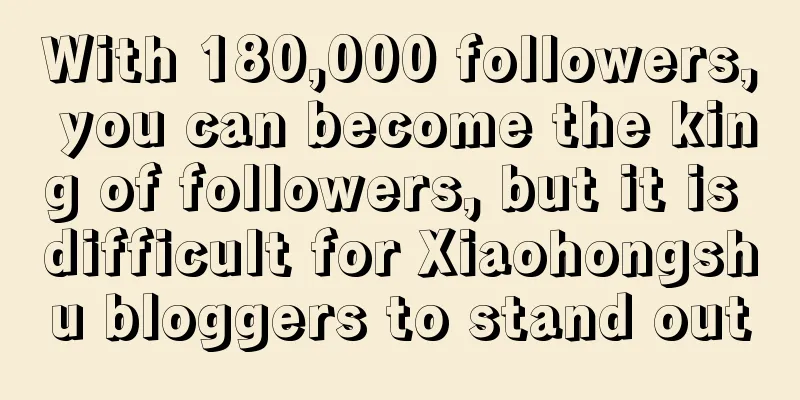Reviewing the explosion and decline of the popularity of Miaoya Camera, we found these five factors that made it popular

For a long time, the AIGC technology that has been seen in technology news in the past seemed to be far away from consumers. However, starting from the past two weeks, an AI photo app called Miaoya Camera has successfully become popular among C-end consumer groups and quickly became popular on platforms such as WeChat, Weibo and Xiaohongshu. The topic tag on Xiaohongshu has received more than 3.3 million views, and the related WeChat index has soared to more than 18 million. What’s even more interesting is that this camera, which focuses on generating AI photos and ultra-realistic digital avatars online, is not free, but has a payment threshold of 9.9 yuan. However, this has not stopped consumers’ love for it. It has won the favor of a large number of young people with its extremely high “output” rate, and even made users say that they no longer need to go to offline stores such as Hippocampus to take photos. However, just after MiaoYa Camera became popular in a small circle, a series of negative public opinions followed, such as outrageous "unfair terms" and refusal to refund, making MiaoYa Camera, the first paid AI photo product for young people, show signs of "cooling down before becoming popular". The case of MiaoYa Camera, which should have "got up early" and tapped into the big trend of young people trying out AIGC, ended up with a lukewarm situation. It very intuitively reflects that in the new field of AIGC, in addition to the novelty and creativity of the products, the security and compliance issues of user data are also parts that need to be treated with caution. 01 It went viral as soon as it was launched, and Miaoya quickly became popular and “yellow”By simply uploading about 20 photos, you can create your own digital avatar and generate professional-quality portraits. From the very beginning, MiaoYa Camera has been different from the products of Internet giant AIGC. After all, AIGC products such as ChatGPT, Wenxinyiyan, Midjourney, etc. are either only available to foreign users or not open to individual users, or require a high threshold to get started. For the vast majority of general consumers in China, these AIGC products are things that can only be seen but not touched. However, the emergence of Miaoya Camera has changed this situation. After it was officially launched on July 17, Miaoya Camera broke the circle on platforms such as WeChat, Weibo and Xiaohongshu in just over a week without much publicity. According to Morketing's observation of the WeChat index related to Miaoya Camera, Miaoya Camera experienced some user accumulation between July 17 and 23, and then began to surge in popularity from July 23, reaching the first and highest peak in WeChat popularity on July 25. At the same time, on the Xiaohongshu platform, the topic tag of Miaoya Camera also received about 3.3 million views. How can a little-known app achieve such results in such a short period of time? After analysis, Morketing believes that the following five reasons are the main reasons why Miaoya Camera can become popular in a small area: 1. Hit the mark between AIGC and young people’s interest in trying new things. From the beginning of the year to now, wave after wave of technological innovations have made AIGC a hot topic. In the enthusiastic atmosphere of “AI technology changes the world”, ordinary consumers only hear related reports but rarely have the opportunity to actually experience it, so they are naturally curious about AIGC. And for young people, trying new things has always been one of the core characteristics of this group. In this case, Miaoya Camera, as an early AIGC product for C-end users, not only unveiled the mystery of AI technology for users, but also greatly satisfied the young people's desire to try new things. 2. Find the right entry point. As a general technology that can have deep connections with various industries, AI has great application prospects in many scenarios. However, for the C-end market that has to deal with a large number of consumers, it is still not easy to choose an entry point that can be accepted by the public. Compared with AI search, AI chat, and AI painting, the "AI photo" feature featured by Miaoya Camera this time is not as technically difficult and versatile as the previous ones, but its advantage lies in the fact that photos and portraits are closer and more familiar to ordinary consumers. After users generate beautiful photos through AI photo, this process of letting users quickly get a "sense of gain" through AIGC technology is also due to the appropriate entry point of Miaoya Camera. 3. The quality of AI photo itself is good. Although AI photo is a new thing that has never appeared before, from the characteristics of consumer goods, consumers still have expectations about the effect of the product. If the product experience cannot meet the expectations of consumers, it will inevitably affect the further development of AI photo. Fortunately, the quality of AI photos generated by Miaoya Camera is quite good. According to Morketing's observation, in the actual experience of friends around him, except for the possibility of some flaws in hair, hands and other parts, the overall quality of the photos can be recognized by users. 4. Able to meet users’ psychological needs to express themselves and provide emotional value. Products favored by consumers can often bring additional emotional value to users in addition to their practical uses. The popularity of Miaoya Camera is largely due to word-of-mouth among users and the sharing and fission of communication on the platform. This shows that the product provides users with a unique social currency. Taking sharing photos taken with the MiaoYa Camera on WeChat Moments as an example, there are at least two factors that motivate users to share: one is “look how trendy I am”. As one of the few AIGC products accessible to ordinary users, people who have used it naturally find it difficult to resist the temptation of “showing off” and becoming a technology trendsetter in WeChat Moments; the other is “look how beautiful I am”. Many female users have always had the habit of showing photos, and the AI photos taken with the MiaoYa Camera provide them with more beautiful and refined imaginations, further stimulating the desire of such users to share. 5. It adopts the form of WeChat applet and has a very low entry threshold. One of the important reasons why Miaoya Camera has achieved its current success is that it has built itself into a user-friendly product. Although its core feature is to use AI technology to make portrait photos, it is also doing its best to lower the threshold of use to eliminate users' fear of AIGC technology. MiaoYa Camera's choice to go online in the form of a WeChat mini-program platform is an important step in lowering the threshold. Since WeChat is a social software that domestic users must use every day, MiaoYa Camera's appearance in the form of a mini-program saves users the hassle of downloading and installing on other platforms, and can also provide convenience for subsequent sharing behaviors. In addition, the three-step tutorial designed by Miaoya Camera greatly reduces the user's understanding cost. More importantly, in this process, users only need to upload a few photos of their own without any other operations. Even users who have no knowledge of AIGC can proceed smoothly. Miaoya Camera can almost be said to have lowered the user's usage threshold to zero. However, even with these five advantages, the popularity of the Miaoya Camera quickly faded after it became popular. According to the WeChat Index, after experiencing two peaks on July 25 and 27, the popularity of the Miaoya Camera on the WeChat platform began to decline rapidly. In fact, the entire process of the Miaoya Camera's popularity has been accompanied by a series of negative public opinions, including complaints that it takes too long to make a digital avatar, being named by the Consumer Protection Committee for infringing on consumer rights and overly outrageous user data collection terms, and even a situation where the controversy is higher than the popularity. Although the project team of the MiaoYa Camera made many statements and clarifications afterwards, the surging public opinion still had a huge impact. It can be said that in the process of the MiaoYa Camera's rapid popularity and rapid "cooling", negative public opinion should bear the main and inseparable responsibility. Through the ups and downs of the MiaoYa Camera, we can find that even new things like AIGC products will create new problems and difficulties when they are put into the market, such as the user data privacy issue that has attracted the most criticism in the wave of negative public opinion about the MiaoYa Camera. 02 AIGC products are launched, data compliance comes firstThe reason why MiaoYa Camera’s user data privacy issues were most severely criticized was that it once launched a version of “unfair terms” that were too outrageous. In the user agreement previously provided by Miaoya Camera, users need to authorize Miaoya Camera to enjoy a permanent, irrevocable, transferable, sublicensable, free and non-exclusive license throughout the world (including virtual spaces such as the Metaverse), allowing Miaoya Camera to use the user's content in any form, any media or technology (whether now known or later developed). China Economic Net's report has made a sharp comment on the significance of this clause, "This is equivalent to a company trying to own the user's face and asking the user to pay 9.9 yuan." Many netizens who have not tried the MiaoYa camera for security reasons have expressed similar views. Since the uploaded photos are of extremely high-definition frontal facial features, once personal appearance and other data are mastered by the company, whether it is "re-used" by the company elsewhere or there may be database leaks in the future, it is a huge security risk for users. In fact, the concerns of these netizens are not without reason. Since ChatGPT became popular all over the world, the protection of user privacy data has been a key issue that companies that have launched AI products at home and abroad have been trying to solve. However, from the current situation, although all parties are actively participating, they have not yet found a permanent solution. Take ChatGPT, the most well-known app, for example. In March of this year, Canadian regulators received complaints about ChatGPT's illegal collection, use and disclosure of personal information. Later in late March, the Italian Data Protection Authority temporarily banned access to its website and launched an investigation into violations of privacy rules on the grounds that ChatGPT leaked user chat records. After several months of updates and compliance adjustments, ChatGPT was still involved in a privacy data leak lawsuit last month. 16 people anonymously sued OpenAI and Microsoft, claiming that they used and leaked personal privacy data without permission, and filed a claim of up to $3 billion. Even ChatGPT, the "star" in the AI track, is struggling with compliance issues for user privacy data, so other AI players are naturally no exception. At the same time, many overseas countries have paid more administrative and legislative attention to AIGC products in terms of user privacy data. Just last month, the US Federal Trade Commission (FTC), a US regulator, officially issued a 20-page civil investigation request to ChatGPT manufacturer OpenAI, which will investigate whether OpenAI "engages in unfair or deceptive privacy and data security practices". This is also the first time that US regulators have conducted a risk review of AI chatbots. Compared with the United States, the EU has gone a step further and introduced the "Artificial Intelligence Act" for AIGC in the form of legislation in June, which puts forward more standards and requirements for all products in the field of artificial intelligence. A study by Stanford University shows that most artificial intelligence models, including Google PaLM2 and OpenAI's GPT-4, do not meet the requirements of the EU's "Artificial Intelligence Act", which means that artificial intelligence will face more stringent access requirements in the EU. Turning our attention back to China, the recently released "Interim Measures for the Management of Generative Artificial Intelligence Services" has made specific provisions on generative artificial intelligence in terms of technology development and governance, service standards and legal responsibilities. While setting the tone for the development of generative AI in my country, it has also put the domestic artificial intelligence field on the fast track of safety and compliance. It is understood that with the introduction of the new regulations, products involving AIGC are no longer "technology-oriented", and compliance has become a must for all relevant manufacturers. In most cases, if generative AI for the public wants to be put into use, it must go through the stages of filing and security assessment, and the compliance chain covers a large number of links in the entire project. Soon, the Apple Store responded to this new regulation by removing a large number of generative AI applications from the Chinese region. In the reply to developers, Apple's official review suggestion was that "generative AI services must meet the licensing requirements for operating in China, including obtaining a license from the Ministry of Industry and Information Technology." This represents that from regulatory authorities to platform parties, a clear signal of promoting compliance has been sent to the AIGC market. 03 ConclusionFinally, let’s return to the incident of the Miaoya Camera. Although its rapid rise to popularity and rapid decline in popularity were the result of the combined effect of many factors, we can still gain three insights from it. First, the application of AIGC is fundamentally different from the previous APP boom. AIGC requires strong computing power support. The increase in the number of people using the product will increase the consumption of computing power and further increase the cost. When the consumption of computing power and output are not balanced, it is easy to fall into the embarrassing situation of Miaoya Camera, which requires 9.9 yuan to pay to make up for the cost, and forces users to wait for several or even more than ten hours during peak hours, which greatly affects the user's reputation and usage experience. Second, compliance has become an issue that manufacturers must seriously consider. With the development of the Internet era, Internet users have seen enough and have a stronger awareness of protecting their personal privacy data. If there is a failure in the future involving user privacy issues, it is very likely to cause public opinion and pressure from regulatory authorities to punish. Third, AIGC products must consider both the verticality of the track and the competitive barriers. When analyzing the advantages of Miaoya Camera earlier, we mentioned that it is a good entry point to focus on the field of photo photography, but the verticality of the track will also lead to relatively weak technical barriers. For example, after Miaoya Camera became popular, it had to face direct competition from Meitu AI Photo and Kaji AI Photo. After all, in terms of technology, this is not a moat that others cannot cross. Overall, the emergence of MiaoYa Camera can be regarded as adding fuel to AIGC's entrepreneurship, but the encouraged entrepreneurs should also clearly see the new changes in current users to avoid stepping on the landmines in user data and ending up with a dramatic ups and downs. Author: Lumens Source: WeChat public account "Morketing (ID: Morketing)" |
>>: 【0 to 1】App simple construction community recommendation
Recommend
Faced with a phenomenon-driven node, how should brands create hits and leverage the momentum to break out of the circle?
How can we use the current hot spots and popular I...
How long does an Amazon account suspension last? What are the consequences?
When using Amazon accounts, you need to pay attent...
What is the difference between Amazon SD ads and SP ads?
If Amazon merchants want to place advertisements, ...
How can Wish remove a product? What are the consequences of removing a product?
As a well-known cross-border e-commerce platform, ...
Reveal the truth about your brand with 6 smiles
Why do brands go out of the circle and why do they...
I taught small and medium-sized enterprises to use ChatGPT and I made $500,000 in 3 months
Under the influence of ChatGPT, the entire workpla...
What are the consequences of a high Amazon return rate? How can we reduce the return rate?
As an Amazon merchant, what you are most concerned...
Bonus inside | Uncover Huawei's APP message push strategy, easily achieve user growth
As a highly effective marketing tool, Push message...
What are the payment methods on cross-border platforms? Introduction to payment methods
To do cross-border e-commerce business, merchants ...
eBay Canada adjusts fees for selling sneakers
eBay Canada recently announced that eBay is adjust...
Are there any advantages to Amazon local stores? What are the advantages?
In Amazon, when people open stores, they are gener...
JD.com has N 618 ads, but only one keyword
This article will take you to find out why "u...
Douyin brought goods: This product sold 798,000 orders
How to use Douyin live streaming to achieve a leap...
10,000-word analysis | A complete closed loop from brand breaking through the circle to harvesting on Douyin
In this article, the author explains in detail the...
What are the requirements for opening a personal store on Shopee? Can you make money just by opening a store?
It is free to open a store on the Shopee platform....







![6 popular article templates on Xiaohongshu|Just follow them [Industry templates V2.0]](/upload/images/67e706b7d094f.webp)

